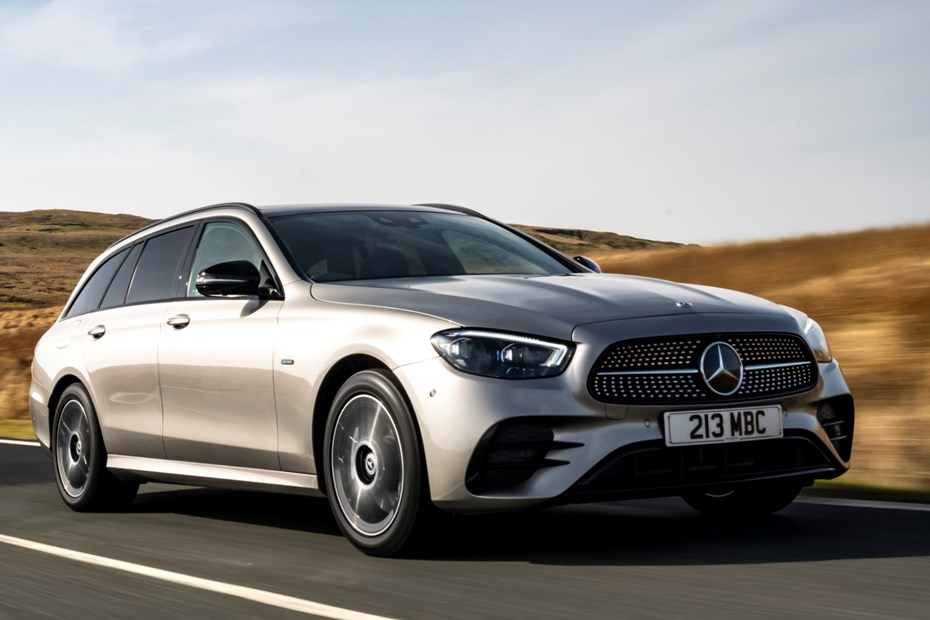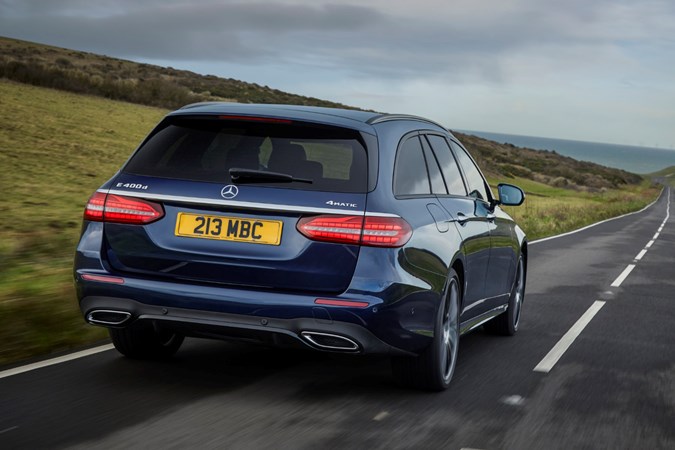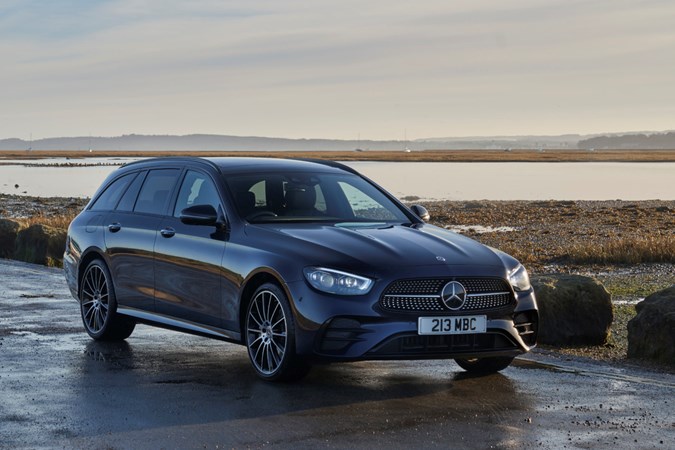
Mercedes-Benz E-Class Estate (2016-2023) engines, drive and performance

- Wide range of engines to choose from
- Efficient hybrids and firebreathing AMG models
- There’s not a bad engine in the bunch
The E-Class Estate’s engine range is a particularly wide one, and like the BMW 5 Series Touring and Audi A6 Avant almost every type of buyer is catered for – whether they want a small petrol, an efficient diesel, or a firebreathing performance variant.
The kicker for the Mercedes is that most of its range features 48V mild-hybrid technology, which boosts response and improves engine efficiency.
Mercedes kicks things off with the E 200 petrol. It’s a four-cylinder unit producing a total of 211hp, capable of accelerating from 0-62mph in 7.8 seconds. That narrowly makes it the slowest engine on offer, mainly due to a lack of torque – we’d recommend against getting this engine, as it’s likely to struggle a little with a fully-laden E-Class Estate.

Much more of a sensible option (and the one Mercedes expects most buyers to opt for) is the E 220 d. This diesel has 194hp but bags of low-end response making neat work of a fully-laden car. It’s relaxed, efficient, and suits the car perfectly.
It’s a shame that the E 300 d is just a retuned four-cylinder – if you want a six-cylinder diesel in your E-Class, you’ll have to opt for the E 400 d. This has a seriously hefty 330hp and enough torque to pull a medium-sized moon out of orbit. It’s somewhat overkill for a family estate car, but it’s the sort of overkill that’s very enjoyable indeed. If you regularly travel fully laden or perhaps tow a lot, the E 400 d could be the best choice.
In the middle sits the pragmatic option – the E 300 de plug-in hybrid. We reckon this is one of the best hybrids on sale today in terms of its driving dynamics – Mercedes has tuned them to shift power between petrol or diesel and electric so imperceptibly that without looking at the rev counter it can be difficult to tell which source is powering the car at any moment.
Choosing between these two very much depends on whether you intend to remain mostly in town or if you want to undertake many long journeys. For many buyers, who’ll want electric mobility in town but effortless diesel performance and economy when the batteries are flat on long journeys, the E 300 de makes a great deal of sense. It’s rare to find a diesel plug-in hybrid, and we still don’t know why, when Mercedes has proven how beautifully they can be realised here.
AMG models on a whole other level
The E-Class has two engines tuned by legendary in-house performance arm AMG. They’re the six-cylinder E 53 and V8 E 63 S. Surprise surprise – they’re immensely powerful, with 457hp on offer from the E 53 and a ballistic 612hp from the E 63 S.
These translate to 0-62mph figures of just 4.5 seconds and 3.5 seconds, which are staggeringly fast for what remains a practical, spacious estate car.
We’ve not yet driven the updated AMG models but we’re looking forward to doing so – and seeing how they compare with other fast estates such as the Porsche Panamera Sports Turismo or the Audi RS6 Avant.
Handling
- E-Class is set up for comfort…
- … but still corners effectively
- AMG models a real hoot
The E-Class Estate isn’t the most engaging steer in its class – that accolade very clearly goes to the BMW 5 Series. But that doesn’t mean the Mercedes is bad to drive, far from it.
The E-Class is just biased towards comfort, especially on the E 300 de with its comfort suspension. It still corners neatly, avoiding excessive body roll, and it doesn’t pitch or dive under acceleration or braking. But the E-Class feels heavy, especially in its hybrid forms, and there’s little reward for pushing it to the limit.

Instead, use the E-Class Estate as it’s meant to be used – as a relaxing, comfortable, highway cruiser.
Of course, the AMG versions are a different story, and these cars handle amazingly well given their size and weight. We’ll bring you reports of the 2020 models just as soon as we’ve driven them.



